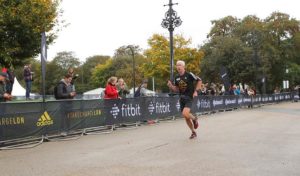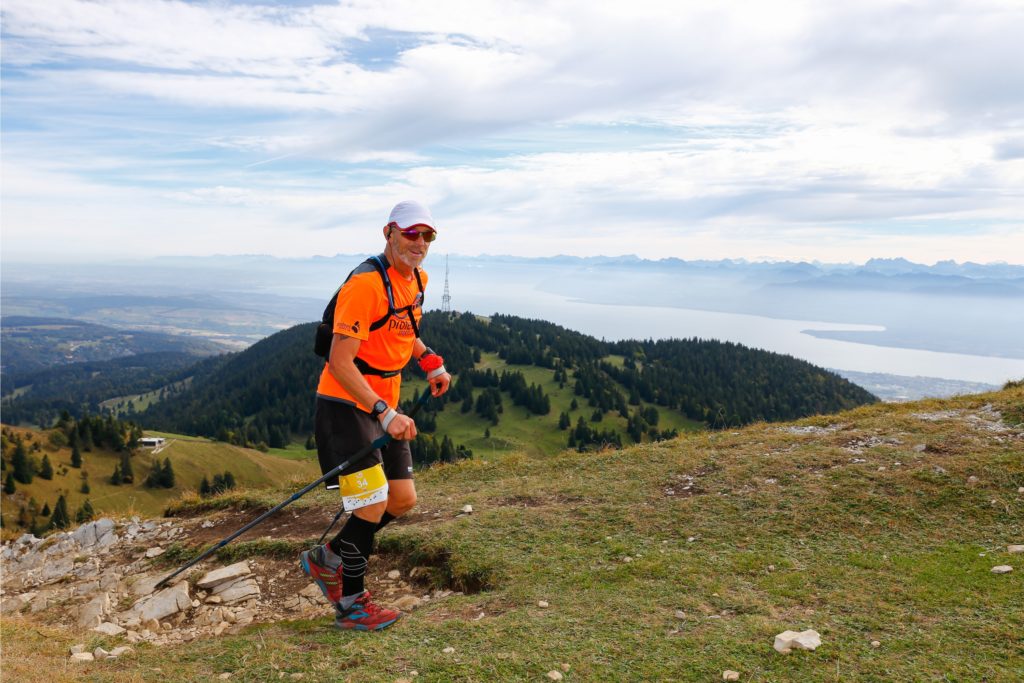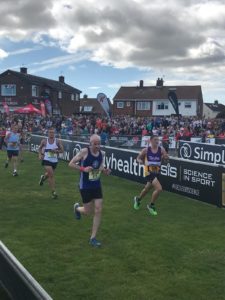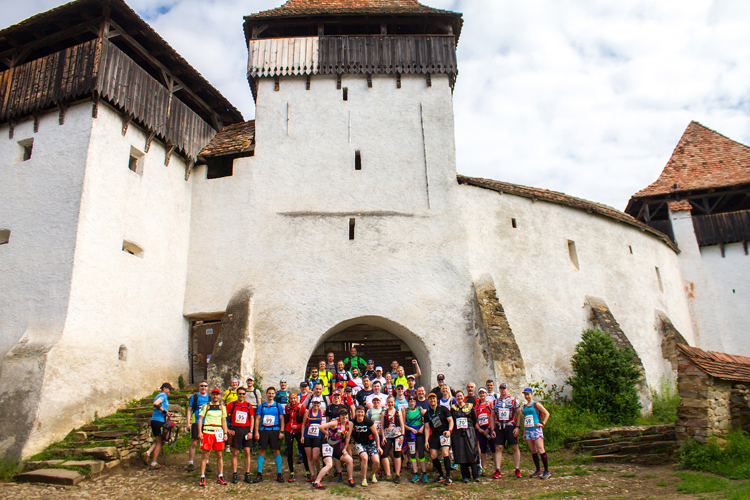
A bear’s sense of smell, I’m told, is 600 times more acute than a human’s. Not a comforting thought as I ran panting through the Transylvanian forest, blood dripping metronomically from my right forearm. To make matters worse, the only dressing to hand was one soaked in antiseptic Manuka honey and, having read Winnie-the-Pooh, I knew full well what foodstuff bears like best. By entering the forest I had entered a food chain, only I was not at the top of it.
I was in Romania to run the Transylvanian Bear Race, which starts in the charming UNESCO-listed village of Viscri and finishes in Sighisoara, a beautiful medieval citadel town (and birthplace of Vlad The Impaler, the inspiration for Bram Stoker’s Dracula). The TBR gives entrants the opportunity to experience one of Europe’s last remaining wildernesses, home to about 6,000 brown bears and 4,000 wolves.
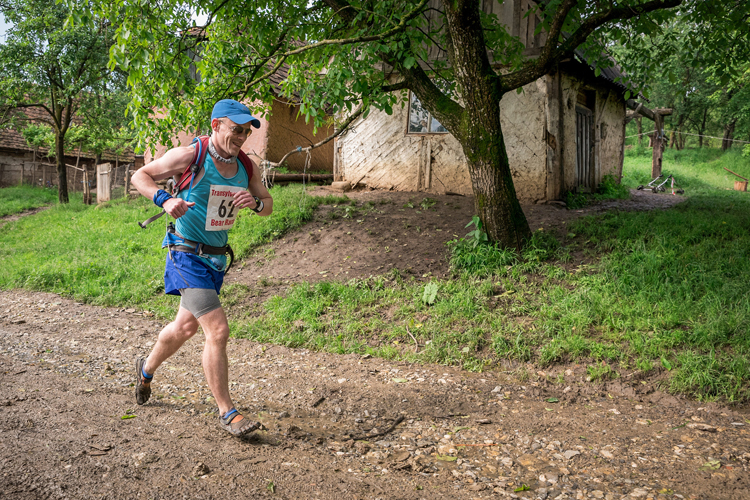
Sharing meals (and snores) with other participants both before and after the race encouraged a strong sense of camaraderie – it was a fellow runner who gave me the bear-bait dressing – and was a great way to get to know everyone, from the novices keen to complete their first marathon to the seasoned ultra-runners returning to tackle the 80K option. Though comfy B&B options are available for those happy to pay extra, most of us chose to sleep on the floor of a large barn complete with resident bats. As a Princess-and-the-Pea sleeper I was mighty pleased that I’d lugged along my 5in-thick luxury inflatable mattress (how anyone can sleep on a skinny, oversized mouse mat eludes me) and comfortable enough to be lulled to sleep by the sound of distant howling, though I’m not certain if it was wolves or, more prosaically, just the neighbourhood mutts imitating their ancestors.
The day before the race I explored Viscri, which boasts a fortified church founded by the Saxons who’d come to the region in the 12th century. Few ethnic Germans now remain, most having returned to Germany following Romania’s 1989 anti-Communist revolution. Prince Charles apparently owns several gaily painted houses in Viscri and has been instrumental in championing their preservation. It could be neither confirmed nor denied that he was in residence when I was there but I didn’t spot him in the solitary coffee shop cum handicrafts centre selling the colourful felt slippers and socks that are the village’s other claim to fame.
Bloodied but unbowed
After a hearty breakfast we set off, following an undulating trail that traversed tranquil forest paths canopied in innumerable shades of green, emerging occasionally into sunlit, sheep-strewn pastures. There were only 62 participants so, discounting a handful of other runners passing me, until I entered Sighisoara I saw precisely two shepherds and five dogs. Truly, the (delicious) loneliness of the long-distance runner. On the subject of dogs, we’d been warned they might prove to be a bit of a menace – prompting one runner to consider wrapping his arms in newspaper as protection – but the only ones I encountered were of the contemptuously indifferent kind. In places the track was waterlogged and muddy and made for a run that was mildly technical, at least sufficiently so to leave me, at about kilometre 16, sprawled face down on the forest floor with my elbow lacerated on a small but exceedingly sharp stone. Unable to properly see my injury I invited the first runner following to take a look at it, declaring ‘I can’t see.’ After kindly cleaning and dressing my wound she confessed her relief that I hadn’t been struck blind as she’d initially thought!
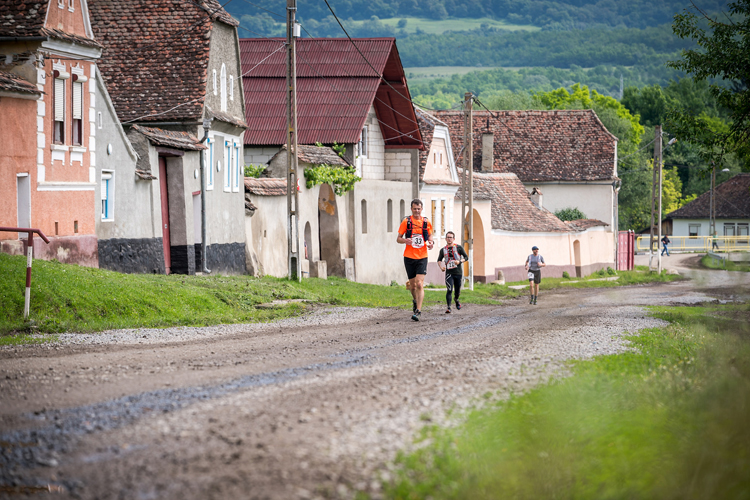
Stairs before steins
On I pressed, at one point spotting what looked like a bear paw print in the mud, but it may just have been the imprint left by new friend Jez’s Vibram Fivefingers shoes. Eventually I made Sighisoara to confront the race’s final challenge: an energy-sapping climb up the 176 steps of the 17th-century Scholars’ Stairs followed by a steep 50m of cobbles to the finish line adjacent to the aptly named Church-on-the-Hill. Race over, and hand-made blue-glazed ceramic medal proudly hanging round my neck, I joined my fellow finishers for a rehydrating stein of beer in Sighisoara’s small but perfectly formed square. Then it was time to swap ‘war’ stories – who’d got lost, who’d been surrounded by snarling dogs before being rescued by a shepherd, who’d blown up at mile 30 but been saved by his girlfriend who’d refused to leave his side, and who (as some told it) had been nipped, on the elbow, by a very, very small brown bear.

Next year’s Transylvanian Bear Race takes place in June 2017. The package includes race entry, transfers to and from regional airports, two nights’ accommodation, breakfast on race day and dinner before and after the event. Whizz Air flies from London Luton to nearby Targu Mures. The TBR raises funds for the European Nature Trust, an international charity for Europe’s last wilderness areas, and for Fundatia Adept, a local charity that works to protect Transylvania’s natural landscapes and the farming communities so critical to their preservation.



